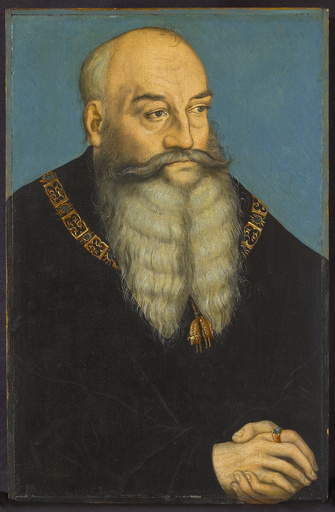A museum in Pennsylvania has made a decision to sell a 16th-century portrait that was once owned by a Jewish family who had to let go of it while escaping from Nazi Germany before World War II. The Allentown Art Museum will auction the painting titled “Portrait of George the Bearded, Duke of Saxony,” as a way to settle a restitution claim by the heirs of the former owner, announced museum officials on Monday. The museum had acquired the artwork, believed to be created by German Renaissance master Lucas Cranach the Elder and Workshop, from a New York gallery back in 1961 and had it on display ever since.
The portrait had belonged to Henry Bromberg, a judge of the magistrate court in Hamburg, Germany, who had inherited a substantial collection of Old Master paintings from his businessman father. Henry and his wife, Hertha Bromberg, faced persecution by the Nazis for years before fleeing Germany in 1938 and eventually immigrating to the United States through Switzerland and France. Their lawyer, Imke Gielen, noted that the Brombergs had to sell off their artworks to various art dealers, including the Cranach, while being persecuted and on the run from Nazi Germany.
The descendants of the Brombergs approached the museum about the painting two years ago, leading to settlement discussions with museum officials. The upcoming sale of the artwork is viewed as a fair and just resolution, considering the ethical aspects of the painting’s history within the Bromberg family. Max Weintraub, the museum’s president and CEO, commented that the moral obligation stemming from Henry Bromberg’s need to escape persecution drove their decision to take action.
The oil-on-panel painting, believed to have been painted around 1534, will be auctioned in January at Christie’s Old Master sale in New York. The proceeds from the sale will be divided between the museum and the family as per the settlement agreement, the exact terms of which remain private. One of the issues addressed during negotiations was the timing and location of the painting’s sale. The family contended that it was sold under duress while the Brombergs were still in Germany, while the museum’s research was inconclusive, suggesting it might have taken place after their departure.
Christie’s mentioned that they would require more information to determine the value of the portrait accurately, particularly regarding its attribution. Paintings confirmed to be by Cranach are generally valued higher than those attributed to him and his workshop. Marc Porter, chairman of Christie’s Americas, expressed excitement over the opportunity to conduct new research on this rare piece and tentatively concluded that it was likely painted by Cranach with workshop assistance.
The Bromberg family has managed to reach agreements with the current owners of two other artworks, with efforts ongoing to locate approximately 80 other missing works lost due to Nazi persecution, according to the family lawyer, Imke Gielen. In a statement, the Bromberg family expressed satisfaction with the responsible approach taken by the Allentown Art Museum in verifying the provenance of the portrait and the circumstances surrounding its separation from Henry and Hertha Bromberg during the Nazi era.



